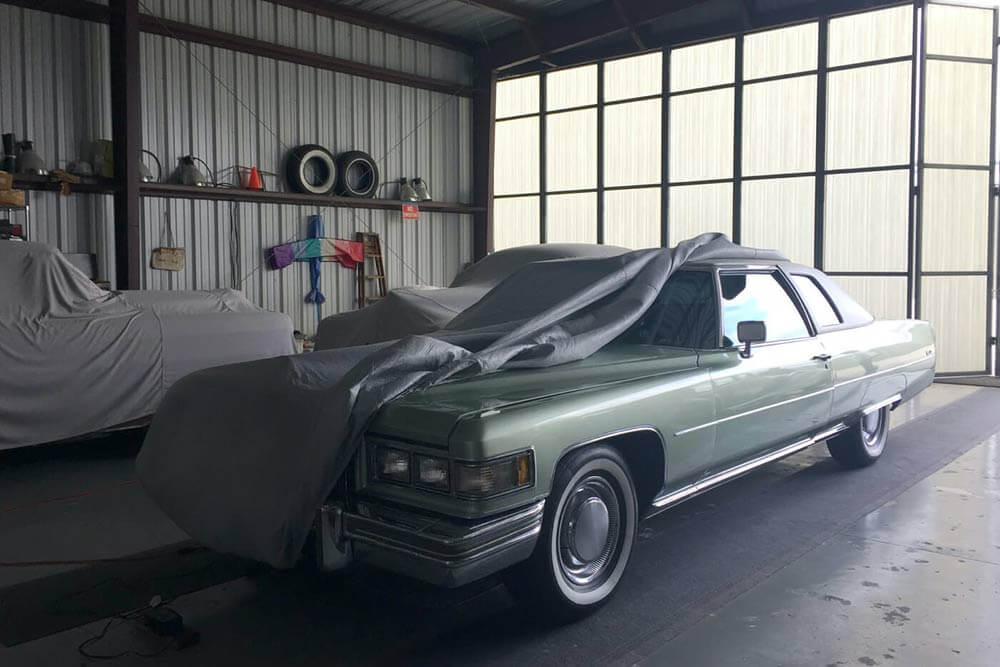Nothing’s better than dusting off the ol’ Mustang for the summer and taking it for a spin. Sadly, with winter around the corner, it’s time to tuck away your most prized set of wheels and let it rest safely during the colder months. But before you say goodbye, it’s important to know that storing your car sometimes requires more care than just covering it up. Check out our top 10 storage tips to keep your muscle or luxury car in prime condition till spring rolls around.
1. Find the right storage location. Whether you plan on keeping your car in your home garage or at a local storage facility, consider these two things to make sure it’s safe for your car:
- Avoid places with excessive moisture; while the storage space doesn’t need to be climate-controlled, too much moisture can cause your car to rust.
- Your car should rest on a leveled concrete or asphalt surface. Storing your car on gravel or bare earth will expose it to extra moisture and contaminants. It may also sink into the ground over an extended storage period (placing wood underneath the tires can help with this!).
2. Keep pests away. Make sure your car doesn’t become home to any unwanted guests. Here are a few preventative measures to keep animals or insects away from your car:
- Close all air vents to prevent critters from getting in.
- Block the inside of your exhaust pipe with steel wool to prevent rodents from making a nest in your car.Try placing mothballs or mint leaves around your car to repel mice and squirrels.
3. Top off all fluids. Empty space inside your tanks will put your car at a higher risk for condensation, which can cause corrosion, varnish and a series of other problems. That’s why it’s important to fill up on fuel, antifreeze, windshield washer and brake fluid. If your storage space is unheated, make sure you have the proper antifreeze and winter blend washer fluid. After filling up, take your car for one last ride to circulate the new fluids through the system.
4. Refresh your engine oil. Don’t overlook this step, even if you’re only 50% of the way till your next oil change. As oil gets used, corrosive materials build up and can corrode your engine if they sit in your tank for several months. Once you’ve changed your oil, remember to drive your car long enough for the engine oil to reach its full operating temperature.
5. Take care of your tires. With months of winter storage, your tires deflate overtime and can develop flat spots. To prevent this from happening, inflate your tires to the maximum PSI rating noted on your car’s sidewalls. Also, to get an accurate reading make sure your tires are cold when you fill them.
6. Keep the interior dry. To keep moisture to a minimum, place about five or six desiccant silica gel packs inside your car. DampRid is an alternative product that works just as well.
7. Give your car a good wash. Remember to clean the wheels, under the fenders and the mud flaps. Remove all garbage inside your car; crumbs or loose wrappers are food sources that can attract critters. Lastly, give your car enough time to dry before it’s put into storage.
8. Maintain that new car smell. Keep a container of baking soda on the car floor. This will help preserve that fresh car smell and prevent the air from going stale.
9. Protect your wiper blades. Prop up your wipers to avoid leaving marks or damaging your windshield. You can also stick cardboard or cloth between the wipers and the glass to keep the blade edge in top condition.
10. Save on insurance. With newer cars, it may be worthwhile to look at potential ways to reduce your
